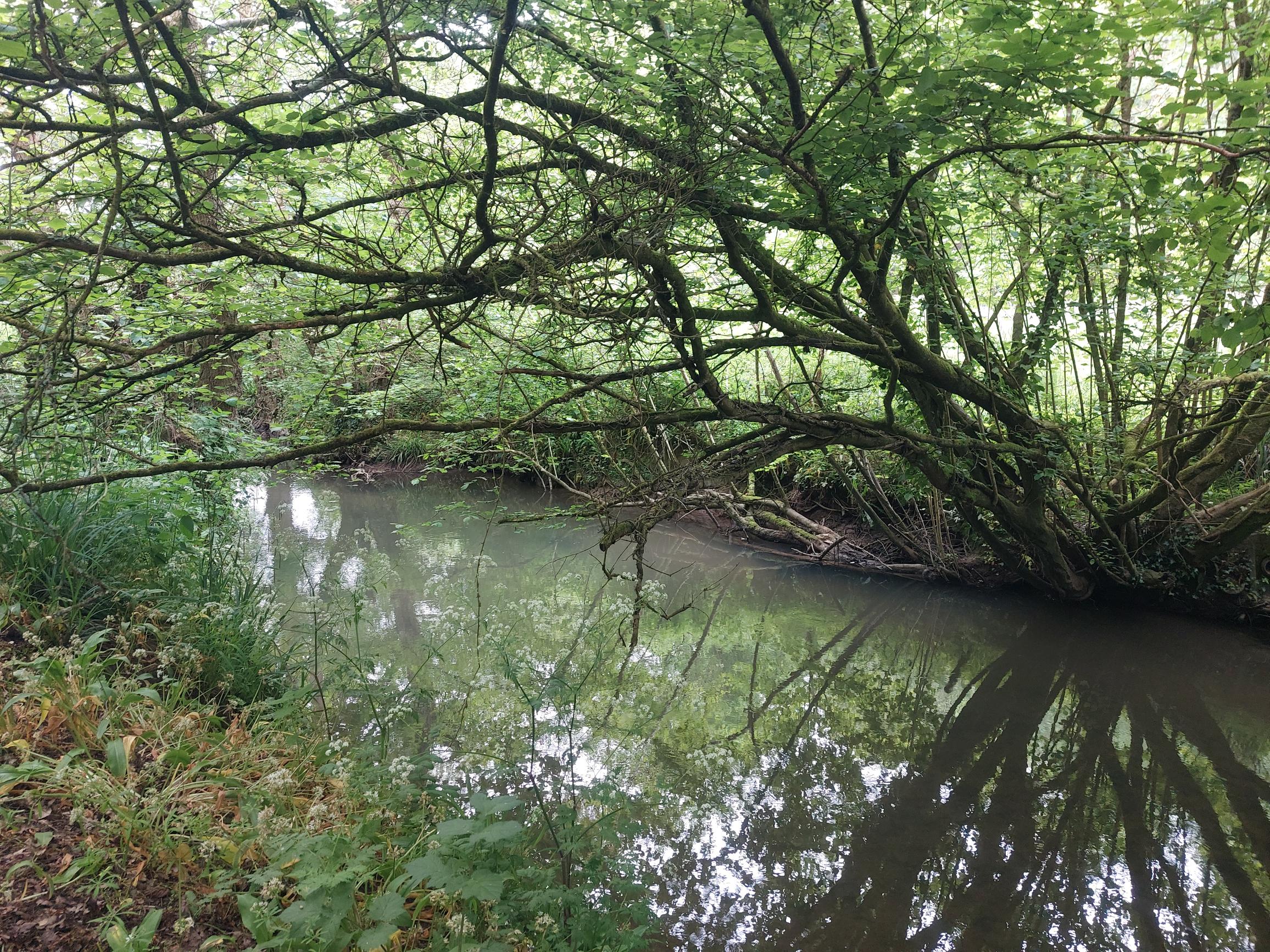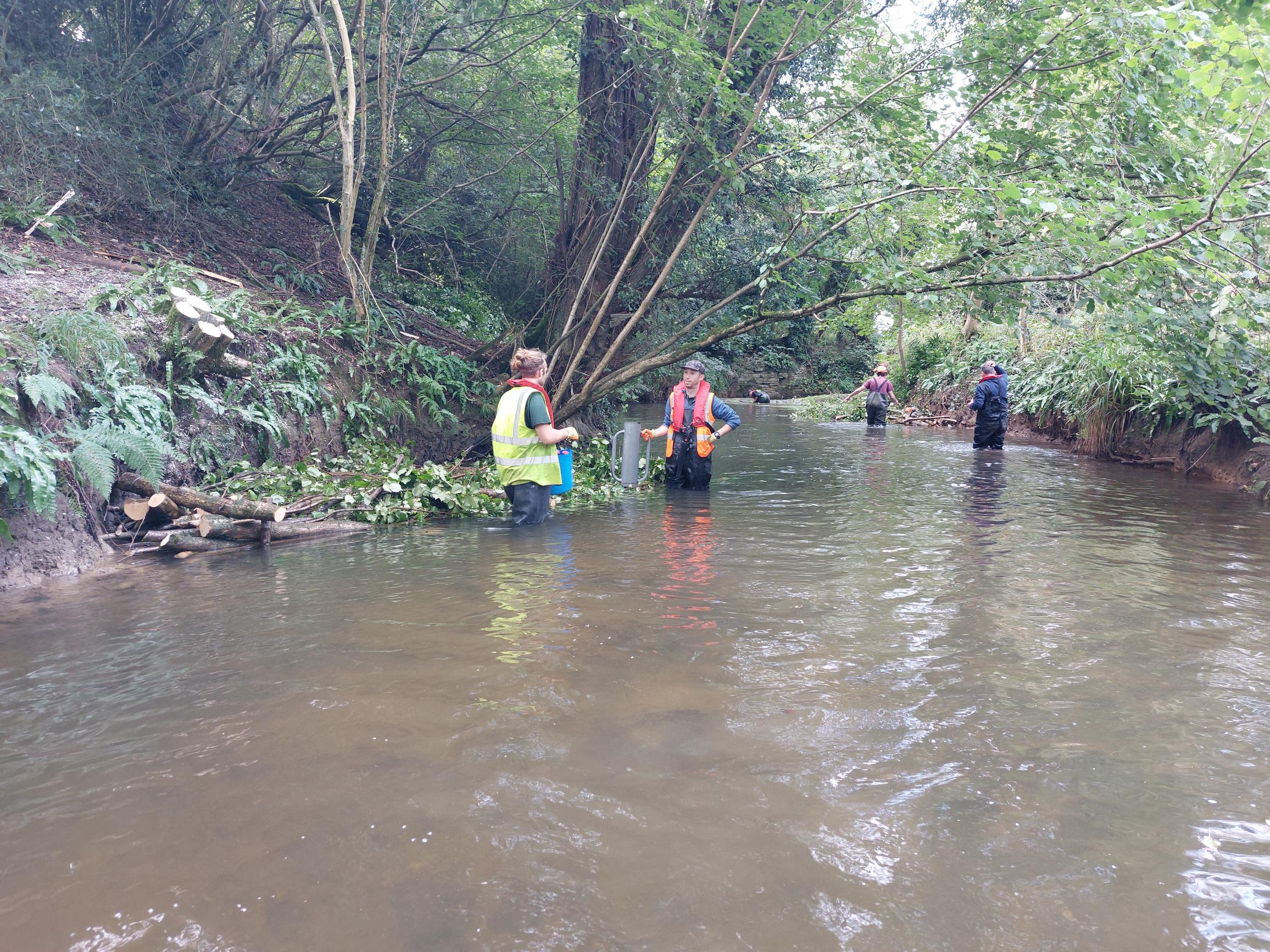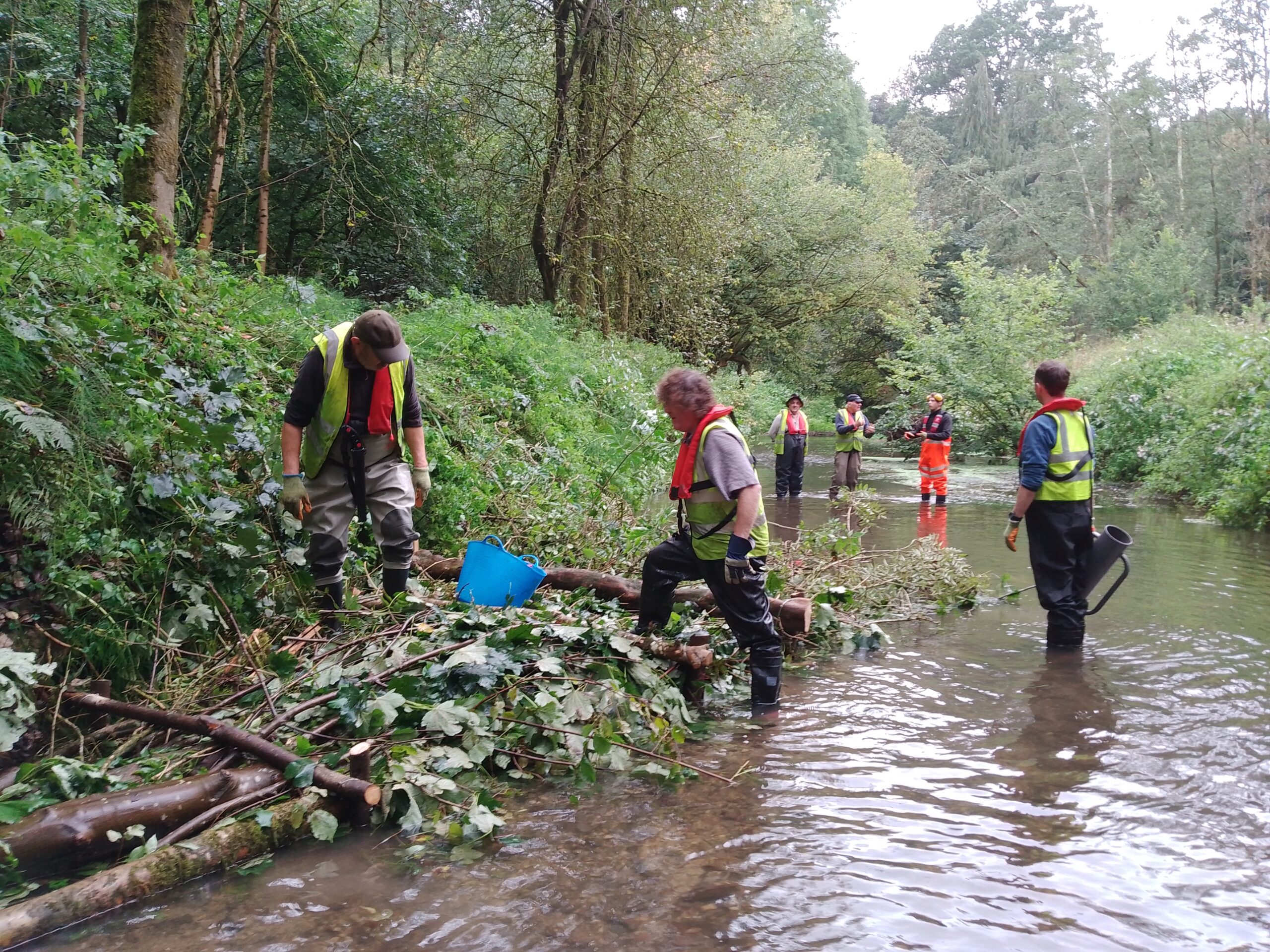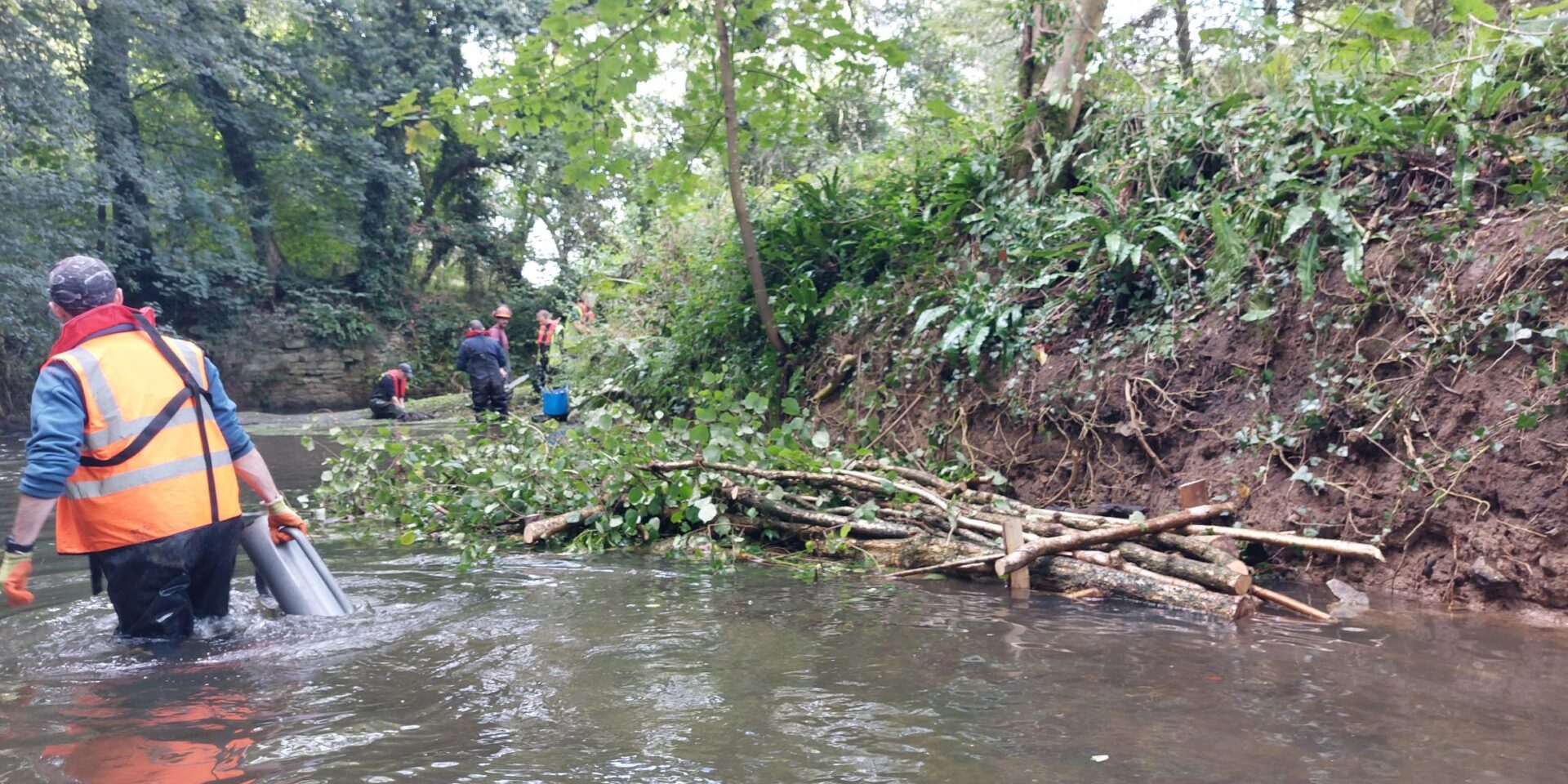Bristol Avon Rivers Trust (BART) have been busy undertaking in-stream habitat restoration on the Little Avon, Damery. The work, funded by South Gloucestershire Council as part of their Climate and Nature Emergency Action Plan, used nature-based solutions to increase biodiversity by creating 16 woody berms with the help of Berkeley Estate Fishing Syndicate and local volunteers.
The Little Avon is currently rated moderate ecologically under the Water Framework Directive (WFD). The impact of climate change and continued abstraction, has resulted in lower flows and reduced water levels, reducing the ecological health of the river during summer months. Historic management practices which have led to section of the river being straightened and overwide, reducing biodiversity.
There is also a lack of in-stream habitat. No wood in the river and a lack of aquatic plants due to overshading has led to a featureless channel with few wildlife refuges, that provides little in the way of food or cover for fish and other aquatic species.

To help improve these conditions, BART developed a river restoration project to improve a 1km stretch of the Little Avon by installing 16 woody debris berms. This project was delivered over 5 days in late September with help from the Berkeley Estate Fishing Syndicate.
BART staff with a local contractor selectively coppiced hazel and alder alongside the riverbank to provide material to create the woody debris berms. At specified points along the river identified by BART, volunteers supervised by BART created the woody debris berms by packing the collected woody material to create wedge shaped structures jutting out into the river channel.

Creating woody berms adds complexity to rivers, aiding in the restoration of natural processes by creating areas of faster and slower flows, increasing flow diversity, and creating scour and deposition. Woody berms increase flow variability; using appropriately positioned woody material in the channel allows processes like bed scour to remove sediment from the gravels. The woody material will also serve as sediment traps, helping to remove sediments from the system. It will also narrow the channel during summer low flows, making rivers more resilient to a changing climate.
Woody berms increase marginal vegetation because woody debris features installed along channel margins create a more gradual transition from in-stream to terrestrial habitat, making it more suitable for colonisation by marginal plants like yellow flag iris (Iris pseudacorus) and water mint (Mentha aquatica). This, in turn, will improve habitat for species like the water vole (Arvicola amphibius) and a variety of invertebrate species that are important food sources for freshwater fish.

We would like to extend thanks to Tortworth Estate, and other local landowners for their permission to undertake this important restoration work. We would also like to thank Berkeley Estate Fishing Syndicate for their incredible assistance delivering the project, and South Gloucestershire Council for funding the project.








